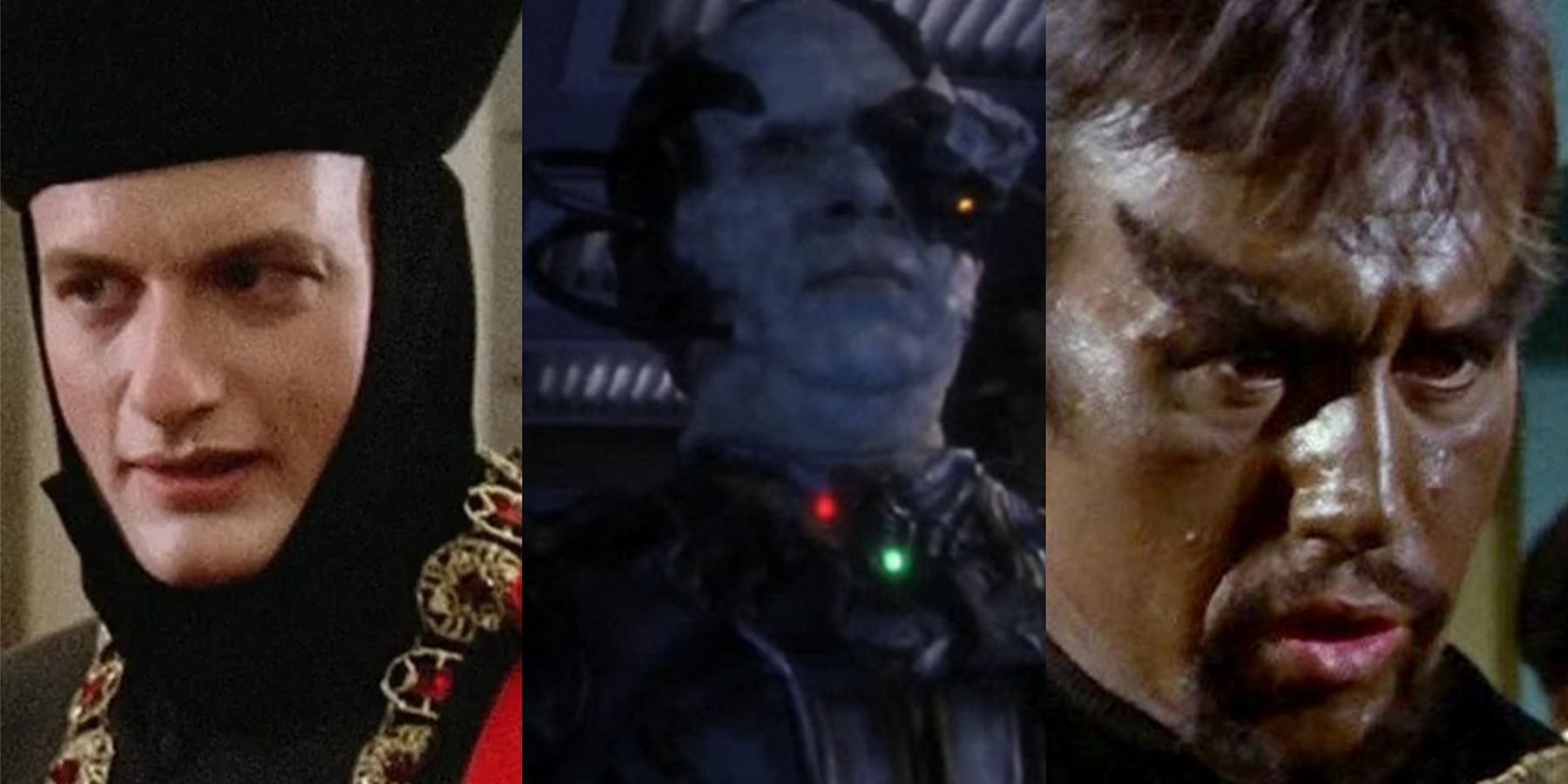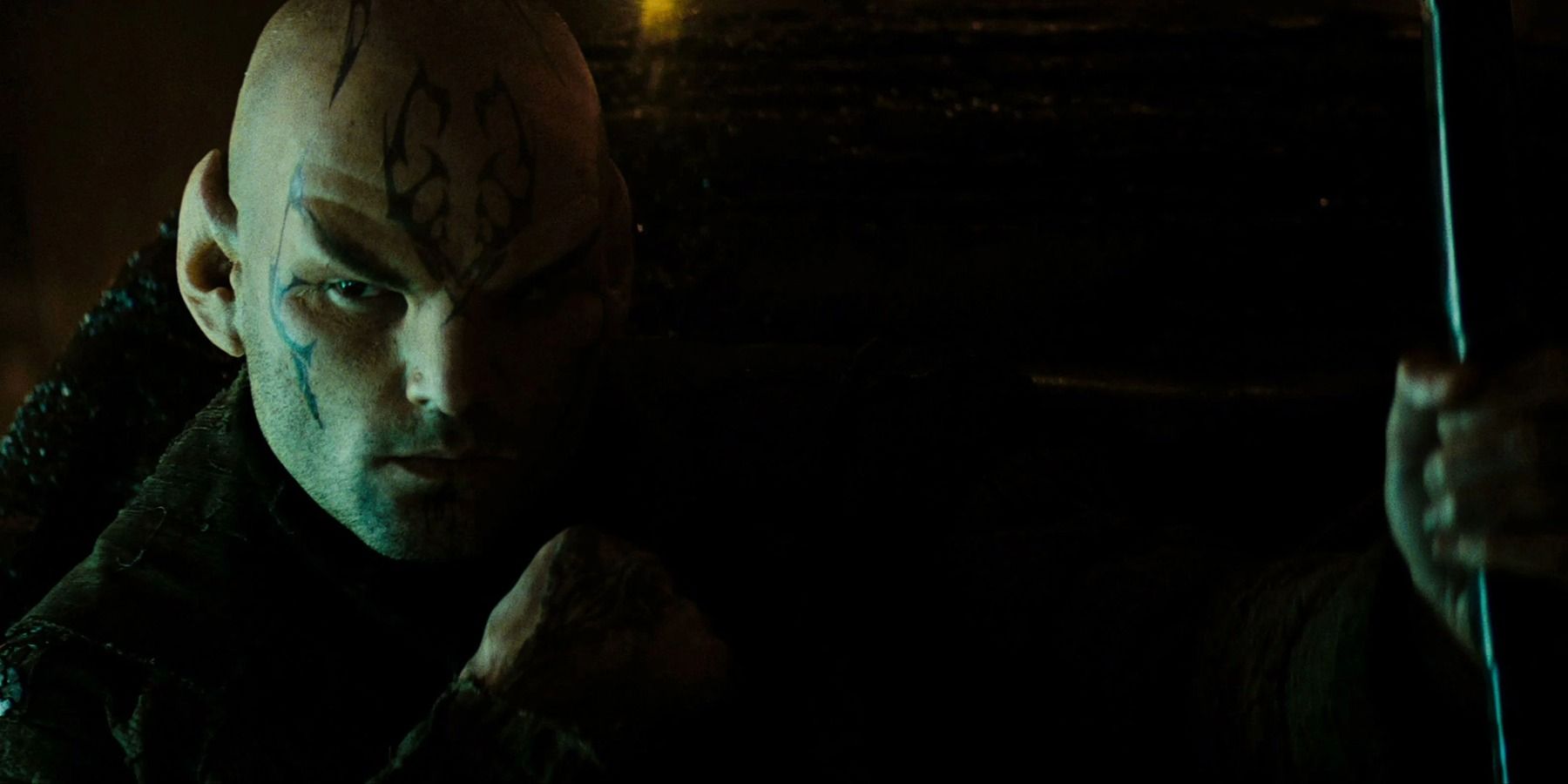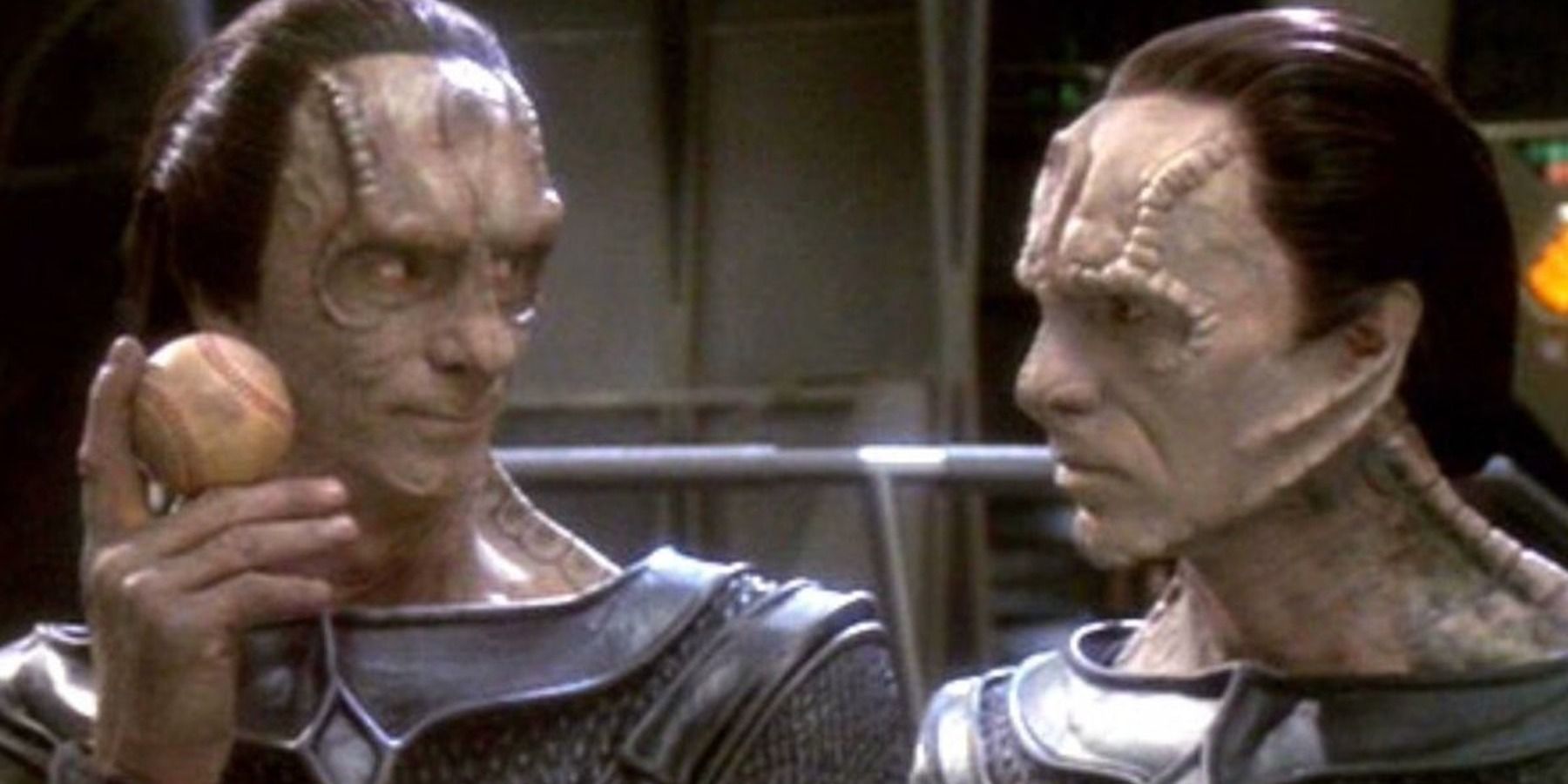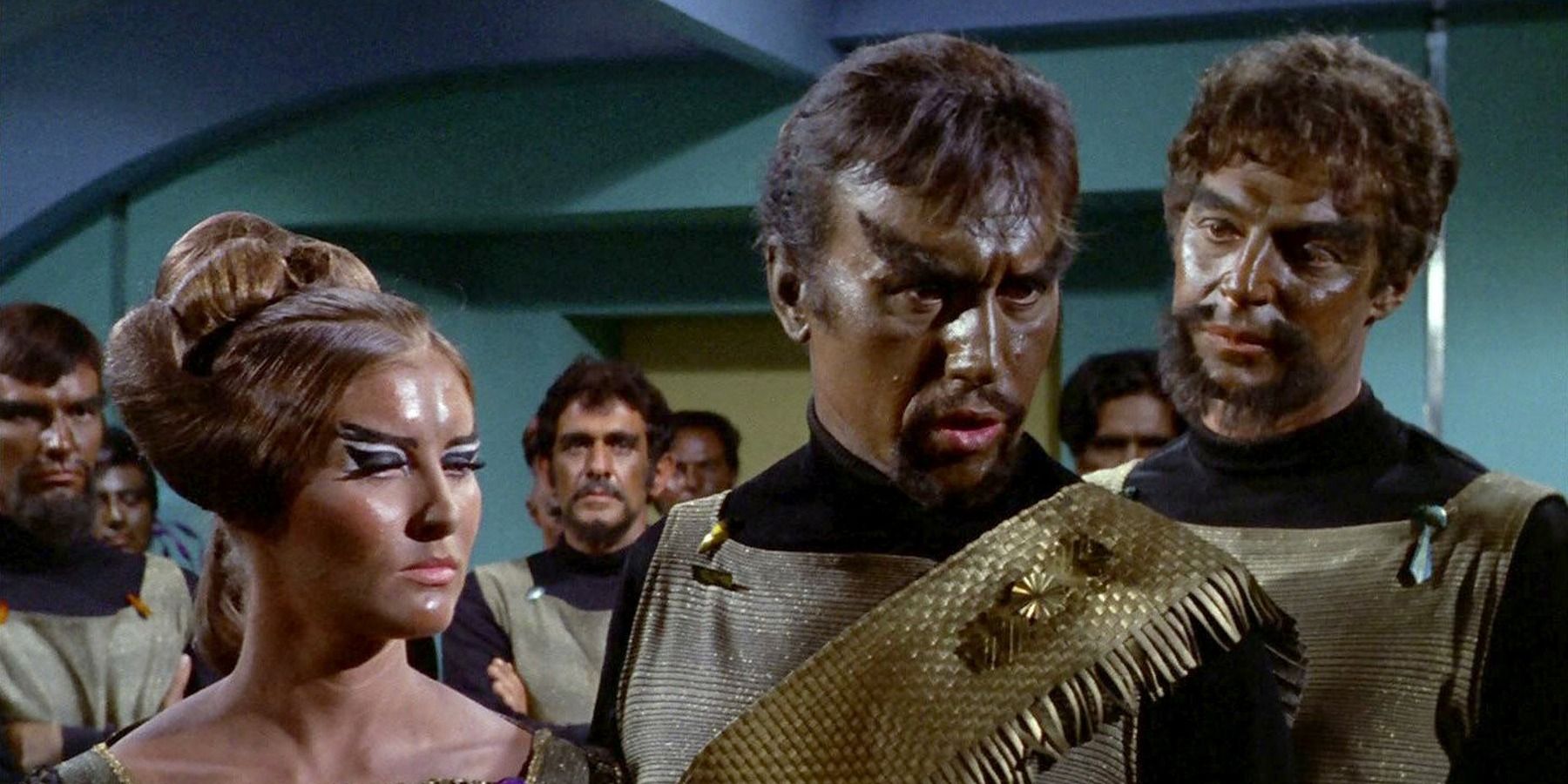Over fifty years of TV series and movies have made Star Trek a legendary franchise in modern media, as well as popular culture. The main reason Star Trek has had such staying power is due to its stories, which range from its 1966 origins to critically acclaimed streaming shows today. Dozens of instalments in this futuristic universe means dozens of beloved characters, often in the form of heroic explorers. This abundance of heroes means there is also a long list of antagonists, many of whom have made their own mark on the franchise.
The saga of Starfleet and its obtrusive agents of chaos began with Captain Kirk’s crew, who encountered all kinds of alien life while traveling the galaxy. Warrior races, telepathic madmen, and bloodthirsty dictators were among some of the worst enemies of the Enterprise, but they set the stakes for the ship’s mission. The following shows and movies built onto the universe by adding more contentious species and individuals, yet only some of them became household names.
A classic way of making an antagonist more engaging is to give them a personal connection to the main character. The most well-known villain of the Star Trek universe is almost certainly Khan Noonien-Singh, who follows this formula exactly. He has his debut in Star Trek: The Original Series, season 1, episode 22, “Botany Bay,” in which he’s revealed to be a genocidal world leader from the 20th century. He takes a liking to Kirk, an affection that is quickly inverted when Kirk strands him on a deserted planet. A desire for revenge sustains him for over a decade, until he’s able to attack Kirk again in Star Trek II: The Wrath of Khan (1982). Khan’s machinations leave Spock dead and the Enterprise crew in tatters, making him a dark part of the history of the Federation, as well as Earth.
Personal hatred also gave rise to Nero, a grief-stricken Romulan who blamed Spock for his loss in Star Trek (2009). In the Prime timeline, Spock’s failure to prevent the destruction of Romulus leads to Nero attacking him, accidentally launching them into the past. This event creates the Kelvin timeline, in which the Enterprise crew forms differently, Vulcan is destroyed, and Kirk’s father is killed young. Nero’s manipulation of red matter, a stolen and highly unstable material designed to create black holes, ensures he is to be feared while on his crusade. His deep enmity of both Kirk and Spock also makes him a deadlier villain, as he stops at nothing to kill them – even at the expense of himself and his crew.
Some Star Trek antagonists have personal connections to the heroes, but they blur the line between villain and ally. Q is a godlike being who develops a fondness for the crew of the Enterprise-D, especially Captain Picard, in Star Trek: The Next Generation. He takes the mantle of a trickster, using his enormous power to puppeteer Picard and his crew into situations that amuse him. Over time, he clashes with the other members of the Q Continuum, and his fascination with humanity grows, to the point that he’s actively helping Picard by the time of the events in Star Trek: Picard. His villainy derives from his massive ego, but it’s complicated by the compassion he learns from Picard, making him endlessly entertaining to watch.
Most Star Trek villains oppose Starfleet or the Federation, not just a single officer, and that makes them threats to the entire galaxy. Organizations such as the Borg are a danger because they specifically challenge the Federation’s belief in liberty and an individual’s right to choose. The Borg are a technologically advanced hive-mind that has drones instead of people, a collective that answers solely to a Queen figurehead. They absorb cultures and personalities and filter them down to nothing, using up everything in their path with the goal of expanding the ‘order’ of the Borg collective. They are introduced to the Alpha Quadrant in The Next Generation, and menace Starfleet for years, forcing alternate timelines and traumatizing the otherwise stoic Captain Picard.
Another race that threatens the diplomatic tenets of the Federation is the Cardassian Union, which makes up a fascistic multi-planet superpower in The Next Generation and Deep Space Nine. Their impact is felt in Voyager and Lower Decks as well, as the crews have some former refugees, rebels, and survivors of the Cardassians’ colonizing efforts. The Cardassian Union was known for its ruthlessness, its xenophobia, and nationalistic pride, which came into play when it occupied foreign worlds such as Bajor. The Cardassian Union eventually joined The Dominion, a millennia-old state from the Gamma Quadrant, leading to a war with the Federation. The Cardassian Union is an example of a villainous group that the audience can link to real-world history, an allegory that gives their story more weight.
Star Trek is no stranger to involving real-world politics in its series, as seen with the antagonists it chooses to pitch against its heroes. Long before the Cardassians or the Borg, the original show made use of the Klingon Empire, an alien civilization that valued the thrill of domination above all else. In The Original Series, season 1, episode 26, “Errand of Mercy,” the Klingons are introduced as the main thorn in the side of the Federation. Where the Federation is progressive and peaceful, the Klingons are power-hungry and savage. The Klingons and the Federation engage in centuries of hot and cold wars, eventually ending in a ceasefire. The creation of the Klingons is a clear parallel to the Soviet Union, which was the worst threat to the United States at the time the original show was made. The Klingons are integral to the world-building of Star Trek in this way, showing the environment that inspired the creation of the Federation in the original series.
Star Trek has harbored endless variations of villainous people and groups. Honorable mentions include Gary Mitchell, Armus, the Romulan Star Empire, the Kazon, and the Xindi, all entities that have plagued the Federation and its officers in the name of rage, selfishness or evil. They don’t share the prestige of being a heroic presence in the Star Trek universe, but neither could the franchise exist without them.
There’s no shortage of antagonists to the Federation and its allies, but the memorable ones share one crucial feature: they’re entertaining. Whether being someone the audience loves to hate, switching up the usual formula of the universe, or pushing the limits of the main characters, the best Star Trek villains are the most exciting thing on the screen.




